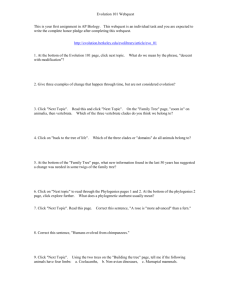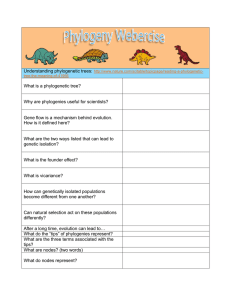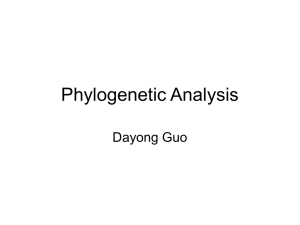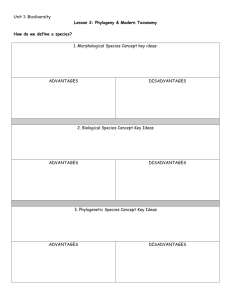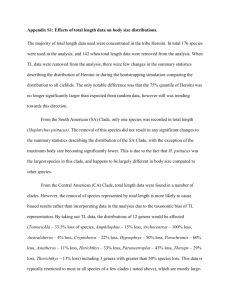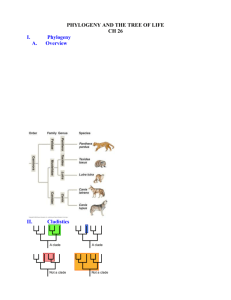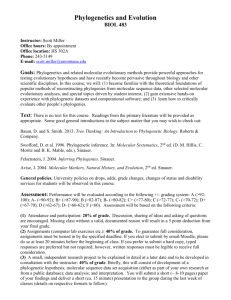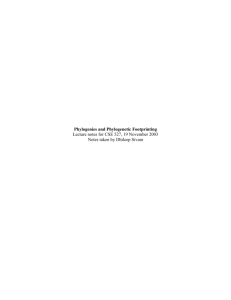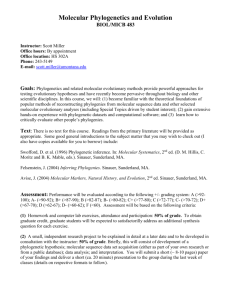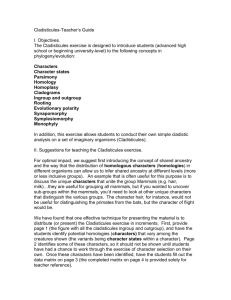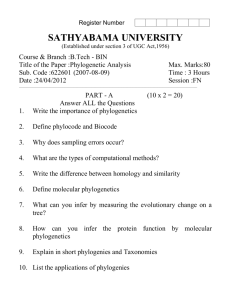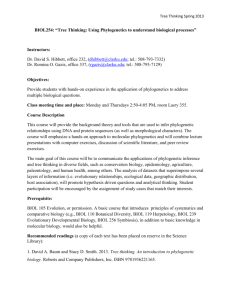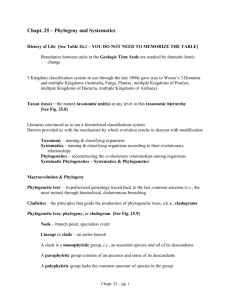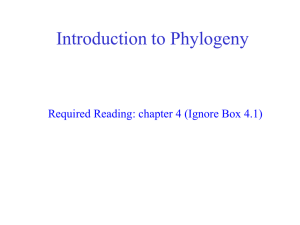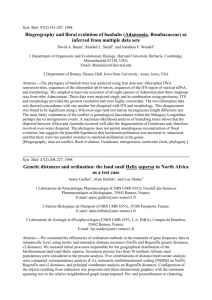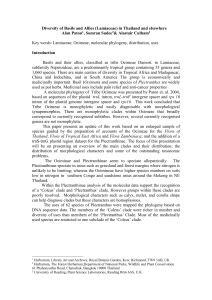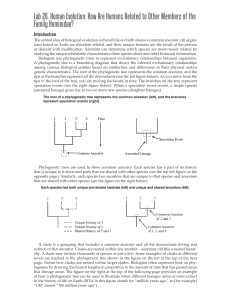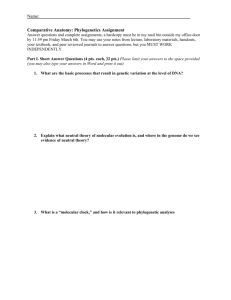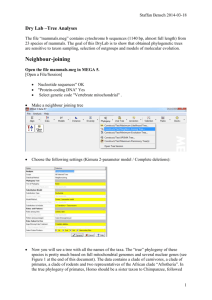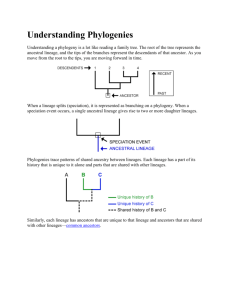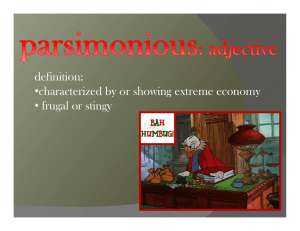Diversity and the Tree of Life activity
advertisement
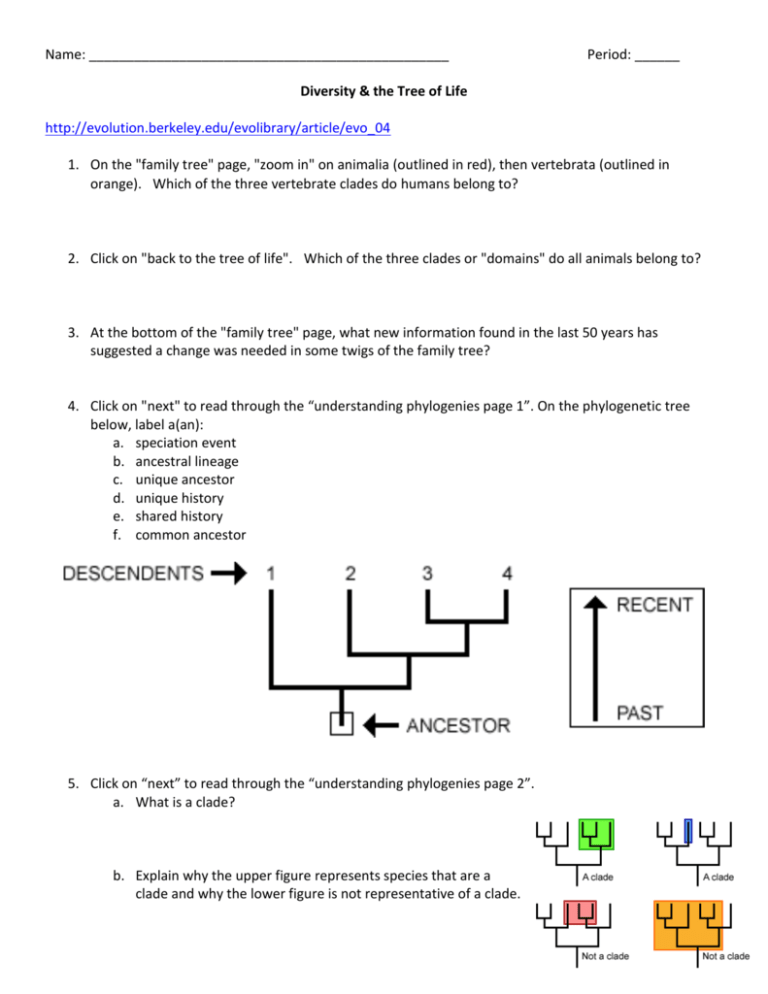
Name: ________________________________________________ Period: ______ Diversity & the Tree of Life http://evolution.berkeley.edu/evolibrary/article/evo_04 1. On the "family tree" page, "zoom in" on animalia (outlined in red), then vertebrata (outlined in orange). Which of the three vertebrate clades do humans belong to? 2. Click on "back to the tree of life". Which of the three clades or "domains" do all animals belong to? 3. At the bottom of the "family tree" page, what new information found in the last 50 years has suggested a change was needed in some twigs of the family tree? 4. Click on "next" to read through the “understanding phylogenies page 1”. On the phylogenetic tree below, label a(an): a. speciation event b. ancestral lineage c. unique ancestor d. unique history e. shared history f. common ancestor 5. Click on “next” to read through the “understanding phylogenies page 2”. a. What is a clade? b. Explain why the upper figure represents species that are a clade and why the lower figure is not representative of a clade. 6. Click "next” to read through the “trees, not ladders” page. Correct the following sentences: a. "A rose is "more advanced" than a fern." b. "Humans evolved from chimpanzees." 7. Click "next" to read through the “building the tree” page. What is a shared derived character? How are they used in reading phylogenetic trees? a. Using the two trees on the "building the tree" page, tell me if the following animals have four limbs: i. Coelacanths ii. Non-avian dinosaurs iii. Marsupial mammals 8. Click "next” to read through the “homologies and analogies” page. a. Give an example of analogous structures. Are these examples of convergent or divergent evolution? Why? b. When can bird wings and bat wings be considered homologous structures? 9. At the right of the "homologies and analogies" page, locate the “more details” box; click on “using parsimony”. Using the information on this page, answer the following three questions: a. Do rodents have an amniotic egg? b. The "four-limbs" character developed between which two groups of vertebrates? c. Based on the last diagram, it seems that a vertebrate with an amniotic egg either has two postorbital fenestrae or what? 10. Click “next” to read through the page “using parsimony (2 of 2)”. What does the principle of parsimony state? 11. Back out of the “using parsimony” to return to the “homologies and analogies” page. Click “next” to read through the “using the tree for classification” page. Why are scientists changing from the Linnaean classification system to a phylogenetic system? 12. Give an example of a group of animals that fits one place according to the phylogenetic system and another according to the Linnaean system. 13. Click "next" to read through the “adding time to the tree” page. On this tree it only shows 500 million years of life, but it says that life has existed on earth for 3.5 billion years. What's missing from the diagram? 14. Click “next” to read through the “how we know what happened when” page. Summarize how the three methods discussed provide evidence for constructing the timeline of life. 15. Click “next” to “important events in the history of life.” Explore the timeline. Which event in the timeline do you find the most interesting and why? 16. Using your textbook or the website: http://www.ucmp.berkeley.edu/alllife/threedomains.html complete the graphic organizer below to summarize the different kinds of life that exist or have existed on Earth. On the lines, define the domains of life – be specific about what differentiates each domain from the others. In the circles, draw an example of something that fits into that category.
